Two Sides of the Same Coin
When our Physician Advisory Board suggested topics for our 2017 publication year, an update on geriatrics/palliative medicine was among the most frequently requested. At first, it seemed there was enough difference between the two specialties to warrant a separate article for each – but as we got into the research, and began interviewing experts, the more it became apparent that as distinct as they are, they are also inextricably linked.
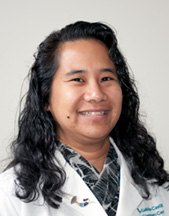
As it turns out, one of the most striking connections between geriatrics and palliative medicine is the local and indeed national shortage of physicians trained in these disciplines. In 2011, the Baby Boomers began turning 65, and that trend isn’t anticipated to abate for some time. “By 2030, it’ll reach maximum impact,” says Marissa Galicia-Castillo, MD, Professor of Geriatrics and Section Head of Palliative Medicine at EVMS. “The number of geriatricians is nowhere near the number needed to take care of all those patients.” An article in the January 25, 2016 edition of The New York Times supports that assertion: “According to projections based on census data, by the year 2030, roughly 31 million Americans will be older than 75, the largest such population in American history. There are about 7,000 geriatricians in practice today in the United States. The American Geriatrics Society estimates that to meet the demand, medical schools would have to train at least 6,250 additional geriatricians between now and 2030, or about 450 more a year than the current rate.”
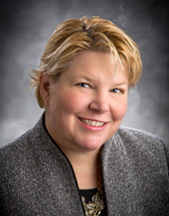
The same holds true in palliative medicine, says Laura Cunnington, MD, a hospice and palliative medicine specialist with Riverside Health System: “There are simply not enough of us to do all the palliative care that needs – and will need – to be done.” An August 20, 2015 article in The New England Journal of Medicine, sets out the numbers: “…the number of palliative care specialists falls far short of what is necessary to serve the population in need. A 2010 study estimated that 6000 to 18,000 additional physicians are needed to meet the current demand in the inpatient setting alone.”
Unfortunately, these statistics are unlikely to improve. It’s understandable: both geriatrics and palliative medicine are among the lowest-paying specialties in medicine. And since geriatric patients are covered for the most part by Medicare, that program’s low (and slow) reimbursement rates make sustaining a practice difficult.
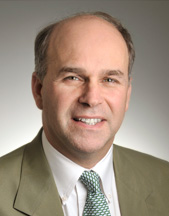
Thus, many of the practitioners in these fields consider the rewards of long-term, rich relationships with patients an incentive. And in fact, many physicians come to geriatrics and/or palliative care medicine after practicing in other areas for many years and experiencing these long term relationships, explains Steven Griswold, MD, a geriatrician and palliative medicine physician with Bon Secours. “We’re trained in medical school basically to think that all problems are fixable with the right medications and treatment,” he says, “but the longer we’re in practice, the more we learn that that’s not the case, so that’s one of the reasons people with more experience tend to gravitate to these fields.”
And, he adds, “It may not be that there’s so much a lack of interest as a lack of training spots to train people to meet the demand.” At Eastern Virginia Medical School, Dr. Castillo says, “We’re teaching geriatric concepts to everyone. We’re still trying to grow geriatricians, but the big focus now is to train other physicians to care for older patients. There is now a required geriatrics rotation students go through in their third year, and there are geriatrics electives in the fourth year.” In addition, internal medicine residents do a month with Dr. Castillo and her colleagues, and EVMS welcomes residents from the Naval Medical Center at Portsmouth to participate as well.
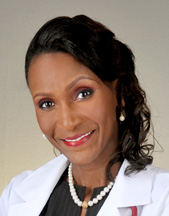
For students at EVMS, Dr. Castillo says, there are six sessions offered throughout the third year, one two-hour session every eight weeks, on a variety of topics. Her next session will concentrate on how physicians deal with patient loss. “It’s not in the textbooks,” she says, “but it’s something these students are going to have to deal with.”
“Who You Calling Old?”
There’s not always an easy way to suggest to patients that they have become geriatric, or indeed, even an agreed upon age in which someone becomes a geriatric patient. “Everyone would probably say 65,” says Daniel Dickinson, MD, Medical Director of Clinical Integration with Sentara Medical Group, “but there are plenty of 65-year olds who are healthy, and there are some younger than 65 who have functional or cognitive challenges. So age is less a criterion than behavioral or functional capability.”
Nakeisha R. Rodgers, MD, is an internal medicine physician with JenCare Senior Medical Center in Norfolk. She sees her 400+ patients on a regular basis, far more often than the two-or-three times a year typical of many practices. “Caring for geriatric patients isn’t a one-size-fits-all situation,” Dr. Rodgers says. “You can’t approach all seniors with the same mindset. I have 80-year old patients who can run circles around some of my 65-year olds.”
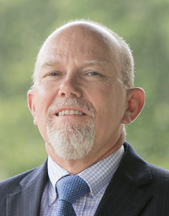
There are key elements to aging, however, to which Dr. Rodgers is keenly attuned. “Dementia, falls, incontinence, these are more common in geriatric patients,” she says. While dementia gets a lot of attention, she feels one of the biggest problems of all for this age group is polypharmacy: “Some of these patients are taking so many medications, it’s like their own little pharmacy in their medicine cabinets. The prescriptions may be years old, or may have been borrowed from a friend – often they don’t know why they’re taking the pills.” Dr. Castillo agrees: “Some of these patients are taking as many as 40 different prescriptions. Their entire day is nothing but taking medicine.” An example of a seemingly innocuous medication – “safe, because it’s over the counter” – is Benadryl. “Most people don’t realize it can cause delirium, confusion, urinary retention and other side effects.”
The highest incidence of polypharmacy is found in nursing homes, according to the National Institutes of Health, which also found that “the burden of taking multiple medications has been associated with greater health care costs and an increased risk of adverse drug events, drug-interactions, medication non-adherence, reduced functional capacity and multiple geriatric syndromes.”
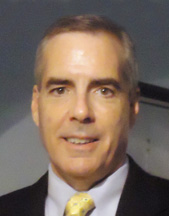
Yet one of the most difficult conversations a physician can have with geriatric patients is trying to convince them to relinquish these unnecessary and sometimes harmful drugs.
In these instances, and many others in dealing with aging patients, Dr. Rodgers tries to enlist the help of a caregiver. “When you’re talking to an 80-year old patient, giving her a list of things to do and when to do them, you can’t always be sure she’s comprehending, or will remember it well enough to tell it back to you, let alone a family member,” she says. “So I’ll often call the caregiver and relay the information at the same time.” When the patient has no such support system, Dr. Rodgers relies on the social worker JenCare retains on staff, or to Social Services. “There are many resources available to these patients, and to the physicians who care for them, but they aren’t always well known,” she says. “Social Services is one of these vital resources.”
Dr. Dickinson agrees wholeheartedly. “One of my wishes is that over time, we have stronger systems in place to communicate and collaborate across our medical neighborhoods for geriatric patients, so we not only have PCPs and geriatricians co-managing our patients’ needs, but also connecting them with other services and professionals—medical and non-medical—within the community,” he says, adding, “Our Clinically Integrated Network, Sentara Quality Care Network, is one such vehicle for that type of collaboration, as it connects independent/private practice and employed physicians and a hospital or health system to improve the quality and delivery of health care services for patients.”
Talking to patients about palliative care.
One of the biggest misconceptions about palliative care is that it’s the same as hospice, Dr. Griswold says, and it’s important to assure patients that this isn’t the case. “Palliative care is broader, in that we can apply the same principles of improving symptoms, maximizing comfort and quality of life to patients at any stage of a serious illness.”
Some physicians and other health care providers, and most patients, still don’t fully understand all the elements of palliative medicine, Dr. Cunnington believes. “We’re still the newest medical specialty,” she says, with Board certification only since 2008. “But there are significant differences between palliative care, comfort care and hospice.” Hospice, Dr. Cunnington says, is fairly well understood by both physicians and laypeople: system-based care for patients within the last six months of their lives. It’s quality-of-life, not curative, treatment.
She explains: “Comfort care is like hospice, but patients don’t have to be on hospice to receive comfort care. We can provide comfort care to patients who decide they don’t want any more active treatment. Palliative care is broader – it can be provided at any point in the disease process. From the time of the diagnosis of the illness, the patient can have palliative care, even if that patient is going to get better. And when the illness is over, and the majority of the patient’s symptoms have abated, there are residual symptoms that can be helped with palliative care.”
Palliative care can be rendered in the hospital, in a nursing facility, at home or in an outpatient center like the Outpatient Palliative Care Clinic, which opened in December 2016 at Bon Secours Mary Immaculate Hospital in Newport News. “Outpatient care is probably the area of palliative medicine that’s expanding most rapidly,” Dr. Griswold says, “in attempt to serve those patients who aren’t at the end of their lives, but who are living with chronic illness or being actively treated for a life-limiting disease, who can benefit from better care coordination and symptom management while they’re receiving these other services in the outpatient setting.”
When Dr. Cunnington joined the staff of Riverside Health System, palliative care was offered to inpatients in the main hospital. Today, that care is available at Riverside hospital locations, as well as its nursing homes and complex care centers throughout the middle and upper peninsula.
Still, these doctors all agree, primary care physicians and specialists alike aren’t aware of what palliative medicine can bring to patient care. “In the hospital, doctors who’ve seen the value of what we do, like to send patients home with home-based palliative care,” says Dr. Cunnington, “but out in the community, it’s been slower to catch on, mostly because these other doctors don’t have that level of experience with palliative care.”
And because there aren’t enough palliative medicine specialists to provide all the care that’s needed, “our focus is on education, to ensure that all of our students have a basic understanding,” Dr. Castillo says. “That’s why every EVMS student is exposed to both geriatrics and palliative care before they graduate.”
“One of the goals for our specialty is to serve as a resource to train people to do primary palliative care in terms of better symptom management, better ability to conduct goals-for-care discussions,” Dr. Griswold says. And that, he emphasizes,
is the most basic level of primary palliative care: a candid, thoughtful discussion with patients about their goals for care. The question is, when should that discussion begin?
“No doctor has a crystal ball,” Dr. Rodgers says. “We don’t always know how long our patients will live. Thus, initiating that discussion before they are in crisis is far superior to waiting until there’s an admission to the emergency room or the hospital.”
And, she says, there are resources to help physicians with the discussion, which many find challenging or uncomfortable.
As You Wish – a unique community resource for physicians, caregivers and patients alike.
Students aren’t trained to have these discussions in medical school, so it’s no wonder they can seem difficult or even uncomfortable to physicians. In a typical 15-minute visit, when there are multiple medical issues to be dealt with (more with aging patients), introducing a sensitive topic like a patient’s wishes and goals for treatment when illness or infirmity strike down the road is impractical, even impossible. And until January of 2016, these conversations weren’t reimbursed by Medicare.
In 2011, the four major hospital systems in Hampton Roads – Bon Secours, Chesapeake Regional Healthcare, Riverside Health System and Sentara – recognized that the majority of advance care discussions occurred when the patients were in crisis. In a remarkably visionary step, these four competing systems came together to look for a community partner to engage the public in a variety of platforms to introduce the importance, steps and benefits of advance care planning. After years of strategic planning, the Advance Care Planning Coalition of Eastern Virginia was established in 2014. The Coalition launched the As You Wish Advance Care Planning program as the unified community education brand later that year.
The As You Wish initiative also serves as an extension for area physicians who have neither the time nor the training to initiate these discussions, and may not have office staff certified to conduct them. “As You Wish has the joint goal with practitioners of educating patients and easing the burden on the care providers,” says David Murray, Executive Director of the coalition. “Unfortunately, many area practitioners aren’t yet aware of the resources the coalition can offer.”
The program is not a substitute for physician-patient discussions, but rather a complement to the need to have these discussions – early and often. “Crisis isn’t the time to understand the planning steps leading to the fact that one day, we’re all going to die,” Murray says. “Modern medicine is about curing, healing and fixing. In 2011, it typically didn’t include discussions about that time when curing, healing and fixing weren’t possible.”
Murray is candid about the challenge: “People don’t want to talk about end-of-life issues. Medicine today is about living longer and better. We’ve taken death out of the picture. People aren’t taking the time to consider their personal goals and wishes about the care they’ll receive. “That’s the irony,” he says. “As independent and control-oriented as we become as adults, we abdicate that independence at this time of life.”
So he takes the message about advance care planning to people where they are: at community centers, in their homes, in a comfortable setting like a restaurant, if necessary, in a hospital – wherever they’re receptive to learning. He talks about the ways in which having an advance care directive can help them maintain their dignity, and ensure that they receive only the care they want. He explains how it can protect fragile relationships. And he notes that currently, fewer than three out of every 10 adults has an advance care directive. In the first year of the coalition, the goal of a three percent increase was achieved – a goal As You Wish hopes to replicate. In addition to having the directive, Murray stresses, it’s important that it’s in the patient’s chart where every physician, caregiver and hospital have access to it.
But, he emphasizes, “Our focus is always on the importance of starting – and finishing – the conversation before the all-important documentation becomes necessary.”
If there’s a common thread that ties geriatrics and palliative medicine together, it’s the need for honest, candid conversation between doctor and patient, and between patient and caregivers. As Dr. Rodgers says, there are many resources available to anyone dealing with these issues.
For more information about the resources and services As You Wish provides, visit asyouwishvirginia.org.

